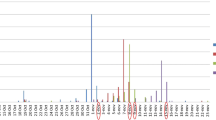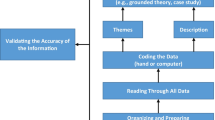Abstract
The traditional lecture-oriented teaching is still the norm in English as a foreign language education courses, but an innovative teaching model, expedited by recent advances in technology, becomes often popular across non-English-speaking subjects. The new model flips the usual classroom paradigm, in which students learn primary concepts outside classroom and class time is reserved for more active problem-based learning. Discussion of model and its impact are more, on the whole, theory-driven than data-informed to consider qualitative feedback to give context before drawing conclusion. Little research has so far been undertaken to rigorously consider class practitioners’ readings on flipped learning experience in EFL discursive contexts in a contrastive manner. In so doing, this study employed a narrative inquiry, using data from interviews and observational field notes. Findings show that that flipped learning is situated practice. The teacher perceived the class challenging due to workload of developing flipped learning materials, inadequate inside-classroom infrastructure, over reliance on student and old-fashioned classroom layout. Likewise, the students found flipped activities time consuming, blaming inadequate outside-classroom infrastructure and teacher’s unavailability for flipped outside class activities. Rather, the teacher valued this model strengthening routs towards transparency for students’ parents on their educational progress. Students appreciated the ubiquitous, more self-paced and autonomous learning nature of flipped model as it makes them more deeply dive into the content. The findings have ramifications for raising awareness of the flipped learning complexities in learning practice.
Similar content being viewed by others
References
Baepler, P. (2014). It's not about seat time: Blending, flipping, and efficiency in active learning classrooms. Computers and Education, 78, 227–236.
Bleakley, A. (2005). Stories as data, data as stories: Making sense of narrative inquiry in clinical education. Medical Education, 39, 534–540.
Bormann, J. (2014). Affordances of flipped learning and its effects on student engagement and achievement.
Butt, M. (2014). Result-oriented e-government evaluation: Citizen’s perspective. Webology, 11(2), 1.
Clandinin, D. J., & Connelly, F. M. (2000). Narrative inquiry: Experience and story in qualitative research. San Francisco, CA: Jossey-Bass.
Cockrum, T. (2013). Flipping your English class to reach all learners: Strategies and lesson plans. Routledge.
Creswell, J. W., & Miller, D. L. (2000). Determining validity in qualitative inquiry. Theory Into Practice, 39(3), 124–130.
Davies, R. S., Dean, D. L., & Ball, N. (2013). Flipping the classroom and instructional technology integration in a college-level information systems spreadsheet course. Educational Technology Research and Development, 61(4), 563–580.
Doman, E., & Webb, M. (2017). The flipped experience for Chinese university students studying English as a foreign language. TESOL Journal, 8(1), 102–141.
Enfield, J. (2013). Looking at the impact of the flipped classroom model of instruction on undergraduate multimedia students at CSUN. TechTrends, 57(6), 14–27.
Farah, M. (2014). The impact of using flipped classroom instruction on the writing performance of twelfth grade female Emirati students in the applied technology high school(ATHS), Doctoral dissertation, The British University in Dubai (BUiD).
Findlay-Thompson, S., & Mombourquette, P. (2014). Evaluation of a flipped classroom in an undergraduate business course. Business Education & Accreditation, 6(1), 63–71.
Foertsch, J., Moses, G., Strikwerda, J., & Litzkow, M. (2002). Reversing the lecture/homework paradigm using eTEACH® web-based streaming video software. Journal of Engineering Education, 91(3), 267–274.
Fulton, K. (2012). The flipped classroom: Transforming education at Byron high school: A Minnesota high school with severe budget constraints enlisted YouTube in its successful effort to boost math competency scores. THE Journal (Technological Horizons in Education), 39(3), 18.
Gaughan, J. E. (2014). The flipped classroom in world history. The History Teacher, 47(2), 221–244.
Gilboy, M. B., Heinerichs, S., & Pazzaglia, G. (2015). Enhancing student engagement using the flipped classroom. Journal of Nutrition Education and Behavior, 47(1), 109–114.
Hamdan, N., McKnight, P., McKnight, K., & Artfstrom, K. (2013). The flipped learning model: A white paper based on the literature review. Flipped Learning Network. 1–17.
Hughes, H. (2012). Introduction to flipping the college classroom. In EdMedia+ Innovate Learning (pp.2434-2438). Association for the Advancement of computing in education (AACE).
Jones, P., Jones, A., Packham, G., Thomas, B., & Miller, C. (2007). It’s all in the mix: The evolution of a blended e-learning model for an undergraduate degree. Journal of Systems and Information Technology, 9(2), 124–142.
Karimi, M., & Hamzavi, R. (2017). The effect of flipped model of instruction on EFL learners’ reading comprehension: Learners’ attitudes in focus. Advances in Language and Literary Studies, 8(1), 95–103.
Kim, M. K., Kim, S. M., Khera, O., & Getman, J. (2014). The experience of three flipped classrooms in an urban university: An exploration of design principles. The Internet and Higher Education, 22, 37–50.
Lage, M. J., Platt, G. J., Treglia, M. (2000). Inverting the classroom: A gateway to creating an inclusive learning environment. The Journal of Economic Education, 31(1), 30–43.
Lemmer, C. A. (2013). A view from the flip side: Using the inverted classroom to enhance the legal information literacy of the international LL. M. student. Law Library Journal, 105, 461.
McLaughlin, J. E., White, P. J., Khanova, J., & Yuriev, E. (2016). Flipped classroom implementation: A case report of two higher education institutions in the United States and Australia. Computers in the Schools, 33(1), 24–37.
McLaughlin, J. E., Griffin, L. M., Esserman, D. A., Davidson, C. A., Glatt, D. M., Roth, M. T., & Mumper, R. J. (2013). Pharmacy student engagement, performance, and perception in a flipped satellite classroom. American Journal of Pharmaceutical Education, 77(9), 196.
Morin, M. B., Kecskemety, K. M., Harper, K. A., & Clingan, P. A. (2013). The inverted classroom in a first-year engineering course. Age, 23, 1.
Murphree, D. (2015). Flipping the history classroom with an embedded writing consultant: Synthesizing inverted and WAC paradigms in a university history survey course. The Social Studies, 106(5), 218–225.
Ostovar-Namaghi, S. A., Norouzi, S., & Hosseini, M. (2015). Exploring the professional beliefs of an EFL teacher: A narrative inquiry. The Qualitative Report, 20(12), 1995–2009.
Papadopoulos, C., Santiago-Román, A., & Portela, G. (2010). Work in progress—Developing and implementing an inverted classroom for engineering statics. In 2010 IEEE Frontiers in Education Conference (FIE) (pp. F3F-1). IEEE.
Rowe, M., Frantz, J., & Bozelak, W. (2013). Beyond knowledge and skills: The use of a Delphi study to develop a technology-mediated teaching strategy. BMC Medical Education, 13(1), 51.
Sohrabi, B., & Iraj, H. (2016). Implementing flipped classroom using digital media: A comparison of two demographically different groups’ perceptions. Computers in Human Behavior, 60, 514–524.
Strayer, J. F. (2012). How learning in an inverted classroom influences cooperation, innovation and task orientation. Learning Environments Research, 15(2), 171–193.
Talbert, R. (2014). Inverting the linear algebra classroom. Primus, 24(5), 361–374.
Tune, J. D., Sturek, M., & Basile, D. P. (2013). Flipped classroom model improves graduate student performance in cardiovascular, respiratory, and renal physiology. Advances in Physiology Education, 37(4), 316–320.
Webb, M., Doman, E., & Pusey, K. (2014). Flipping a Chinese university EFL course: What students and teachers think of the model. The Journal of Asia TEFL, 11(4), 53–87.
Willey, K., & Gardner, A. P. (2013). Flipping your classroom without flipping out. In SEFI-Annual Conference of European Society for Engineering Education. SEFI.
Salimi, A., & Yousefzadeh, M. (2015). The effect of flipped learning (revised learning) on Iranian students’ learning outcomes. Advances in Language and Literary Studies, 6(5), 209–213.
Zappe, S., Leicht, R., Messner, J., Litzinger, T., & Lee, H. W. (2009). " Flipping" the classroom to explore active learning in a large undergraduate course. In ASEE Annual Conference and Exposition, Conference Proceedings.
Author information
Authors and Affiliations
Corresponding author
Additional information
Publisher’s note
Springer Nature remains neutral with regard to jurisdictional claims in published maps and institutional affiliations.
Rights and permissions
About this article
Cite this article
Aghaei, K., Rajabi, M., Lie, K.Y. et al. Flipped learning as situated practice: A contrastive narrative inquiry in an EFL classroom. Educ Inf Technol 25, 1607–1623 (2020). https://doi.org/10.1007/s10639-019-10039-9
Received:
Accepted:
Published:
Issue Date:
DOI: https://doi.org/10.1007/s10639-019-10039-9




